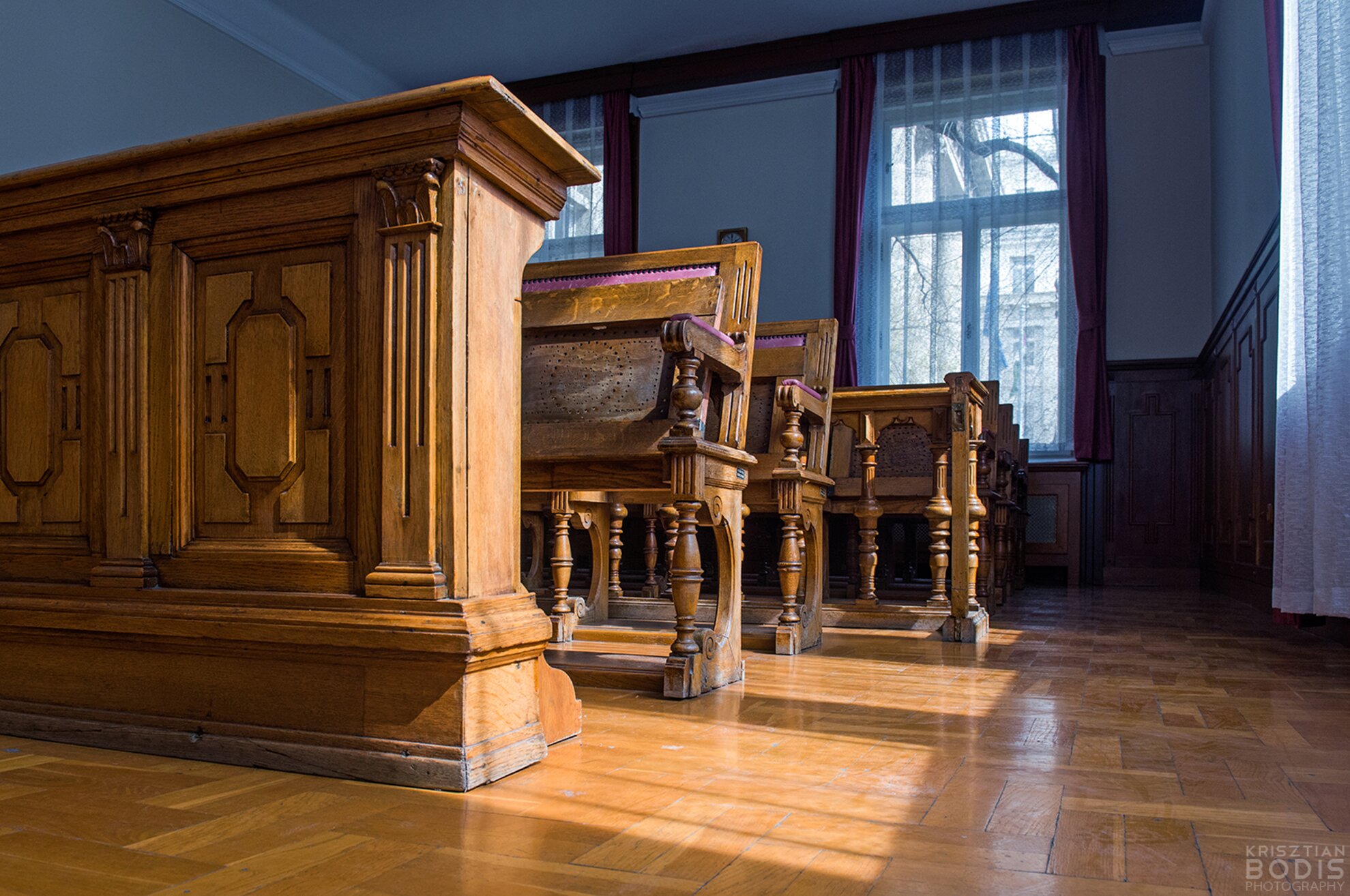The former Palace of Justice (now the Museum of Ethnography) in Kossuth Square was designed by Alajos Hauszmann. At the time, there was insufficient room for the Ministry of Justice in that building, so at the beginning of 1910 they decided to build a new building for this purpose.

The building at 16 Markó Street was designed by Sándor Fellner and building was completed by 1918. Its ceremonial opening, planned to be in the presence of King Károly IV, was cancelled due to the autumn events.

The Ministry of Justice abandoned the building in 1945, but after numerous other "tenants" the Supreme Court moved back into the building, in the area called the Justice Quarter, in 1981.

After a thorough security check, we enter the palace via the main entrance, and the first thing that grabs our attention is the statue of Justitia. The statue, which was originally 3 metres in height and weighed 12 tons, was carved from a block of marble by Triscornia Paolo di Ferdinando in his Carrara workshop, based on designs by Alajos Stróbl. The two side figures of the plinth are by Károly Senyei.

The name of the artist is inscribed on the large statue "Stróbl Alajos fecit" (i.e. made by Alajos Stróbl). Originally, the statue stood in the hall of the already mentioned former Palace of Justice.

Justitia, the Greek goddess personifies jurisdiction and justice. Her blindness - often depicted by a blindfold - symbolises the equality of individuals in front of law. The sword represents the power of law, while the scales stand for equal rights of the people involved in a procedure as well as the restoration of order.

A returning motif in the ornamentation of the building is the fasces, a bundle of rods bound by red leather straps. In Republican Rome, it was a symbol power born by the lictors. Its origins can be traced back to the Etruscans.

On the ground floor, we explore the quite odd, post-modern ceremonial hall, which is where the cases that draw major attention are heard. So for instance cases involving celebrities are often heard here and tabloid reporters can regularly be spotted in the area.

We also took a look at a courtroom that has been preserved in its original state: wooden surfaces, and rows of wooden benches and tables. The chairs are exquisite but not very comfortable - perhaps it was designed like this on purpose so that the defendant wouldn't feel at ease.

We reach the first floor via the red carpeted, double staircase, where we visit the reception hall adjacent to the study of the President of the Curia. It's a fitting venue for receiving international delegations and hosting talks of the highest importance. The most valuable ornament of the room is a wall carpet from the Flanders dating back to around 1700. This piece arrived here from the Museum of Applied Arts.
On 19 April 2015, in the frame of the Budapest100 event, you too can also explore the gigantic building and see the Justitia statue, the reception hall, the holding cell and study of the President of the Curia.




